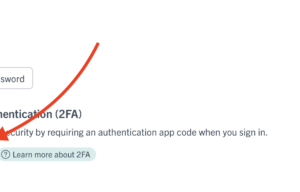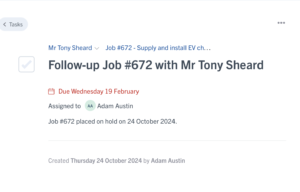
Is your workload up and down like a yoyo? You’re not alone. It’s often unavoidable that your amount of work will fluctuate up and down, but how can you make sure that work stays constant?
YourTradebase co-founder Dean Taylor shares his experience of managing an up and down workload:
At present my work load seems to be up and down like a yoyo.
One day I have weeks of confirmed work, while the next I’m running low and starting to sweat.
This series of ups and downs has made me realise just how important it is to constantly chase new work to make sure work stays constant.
I seem to take my foot of the gas when things are looking good only to regret it when they aren’t.
An up and down work load means it’s vital to be constantly chasing up on new customer quotes. Tweet this
When you work in a trade that doesn’t really allow for repeat business from the same customers, chasing new work needs to be a huge part of your weekly job list.
Following up on quotes needs to be done regularly, even when the answer you get from customers is a ‘No thanks’.
To help me with this, me and the boss (the wife!) have drawn up and documented a workflow process that covers all scenarios from answering the phone or replying to an online enquiry through to where we file any work associated paperwork once the job has been completed.
A huge part of this workflow is how and when we deal with any quotations sent but where we haven’t yet had a response, from potential new customers.
We now send out a letter approximately 7 days after the quotation was sent to all customers that have not responded. This allows us to display a level of professionalism and provides us with a great marketing opportunity.
Whilst brainstorming this sales/workflow process I sat down and rummaged through my file of outstanding quotes and was sick to the stomach once I realised that since the beginning of June I had distributed 21 quotes that remained, as I call them, ‘awaiting response’.
If I had this process in place from day 1 and followed it strictly every week I probably would never get to the stage of work drying up or getting close to.
Yoyo’ing workloads can be managed, but it means having some simple processes in place to make sure you’re always closing new work opportunities.
Now the chase for me is never ending and I am looking forward to seeing the benefits of this simple and easy to do task.
Dean’s top 7 tips for chasing customer quotes:
It might feel as though you’re ‘badgering’ your potential customer, but a well timed and well thought out follow up can help you do exactly what you need it to do – get an answer on a quote you’ve sent.
1. Know when your quote was sent
Make a note and keep it in your diary. It’s important to know how long has passed since you sent it, then you know exactly when to chase it – it’s often timing that can help you win that customer round.
If you’ve used a template, make sure you update the quotation date to reflect today’s date! Learn how a quote template could help you.
Also make a note if they have someone else coming round to size up the job as well, then you know how long you need to leave them after that. If you’re not sure ask, and explain it’s because you want to give them enough time to mull it over.
Most customers will appreciate your forethought.
2. Let your customer know when you’ll be following up within the quote or when presenting the quote.
“We’ll be in touch in a week to see if there’s anything else you need – or to answer any questions you have” – this way they not exactly when to expect it, and they’re not put on the spot if you ring at an unknown time.
Plus if you ring/chase up exactly when you say you will it also helps show consistency and professionalism.
3. Find out the preferred time and method for contacting your customer.
Post, email, phone, SMS? What’s the best time to call – evening, weekend?
Let them make the choice and keep a track of this in an online or offline address book.
4. Set yourself a reminder to for 7 or 14 days after you send the quote.
Decide how long before want to follow-up and set yourself a gentle reminder. It’s easy to forget about chasing quotes if you have lots of work on, or if you are quoting lots of different projects.
If you’re busy, time slips by and before you know it, weeks have passed. Set yourself reminders and take away the worry about following up!
5. Calling customers: don’t chase, ask if you can help.
Ask your customer if they need anything else or want any help understanding your quote, don’t pressurise and keep it neutral.
Most customers won’t know much about the technical aspects of the job you’re doing, so they’ll appreciate any help you can offer.
6. Keep notes on all your conversations
You have a lot on your plate – don’t add to it by trying to remember every facet of every conversation… keep track of key conversations and things that have been agreed. It’ll stop you from getting stressed and possibly from letting your customer down.
7. Power of the post!
Send a follow-up to your original quote with testimonials and your full terms: most customers appreciate the chance to mull it over and read through, rather than having a conversation. So use this to your advantage!
Bonus: Win or lose… get feedback!
Regardless of yes or no decision, there’s things you can learn to improve your next quote: what could you have changed to have won the work -or- what would have helped them make up their mind quicker? Always learn – you never know it could be the simplest thing that you need to change and you’ll find the work flowing in!



